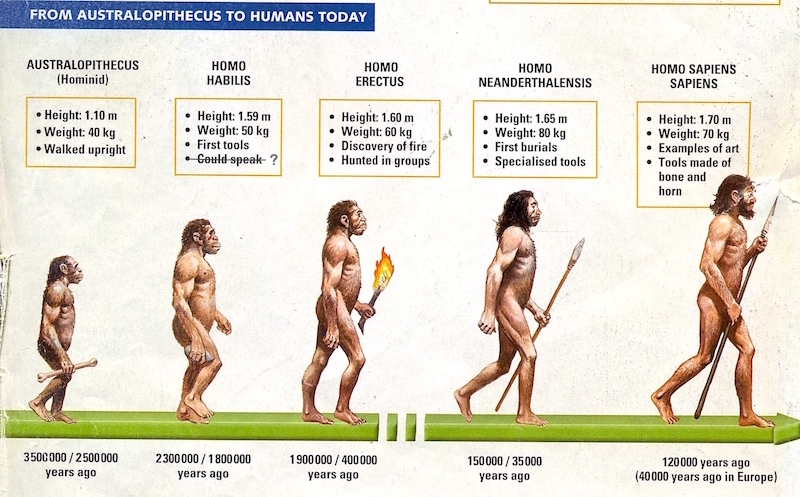The Unseen Architecture: How iOS Updates Shape the Entire Apple Ecosystem
Each year, the technology world holds its breath for the latest iOS updates news, often focusing on headline-grabbing features like customizable lock screens or new emojis. While these additions are welcome, they represent only the surface of a much deeper, more strategic evolution. Beneath the user-facing polish lies a complex architecture of updates that systematically redefines user control, enhances privacy, and weaves an ever-tighter fabric of connectivity across the entire Apple ecosystem. These updates are not just for your iPhone; they are foundational shifts that ripple outwards, impacting everything from the latest AirPods Pro news to the groundbreaking developments in Apple Vision Pro news.
This article moves beyond the changelog to provide a comprehensive technical analysis of the philosophy driving modern iOS updates. We will explore how Apple is building a future centered on user empowerment and seamless integration, dissecting the key pillars of privacy, ecosystem connectivity, and the next frontier of spatial computing. We will examine the real-world implications for users and developers, offering actionable insights and best practices for navigating this constantly evolving landscape. From the latest iPhone news to the whispers of an iPod revival news, software is the invisible thread that ties it all together, making an understanding of iOS updates more critical than ever.
Section 1: The Pillar of Privacy: How iOS Updates Are Redefining User Control
In recent years, the most significant iOS updates have not been about flashy interfaces but about fundamental changes to data privacy and security. Apple has positioned user privacy as a core tenet of its brand, and iOS is the primary vehicle for delivering on that promise. This focus has profound implications, setting new industry standards and reshaping the digital advertising landscape. This commitment is a recurring theme in all Apple privacy news and is a cornerstone of the modern user experience.
The Genesis of App Tracking Transparency (ATT)
Perhaps the most disruptive privacy feature introduced in an iOS update was App Tracking Transparency (ATT). Rolled out in iOS 14.5, ATT requires apps to get explicit user consent before tracking their activity across other companies’ apps and websites. Before ATT, apps could freely use the Identifier for Advertisers (IDFA), a unique device ID, to build detailed user profiles for targeted advertising. Now, users are presented with a simple, clear prompt: “Allow [App Name] to track your activity across other companies’ apps and websites?”
The impact was immediate and seismic. Data indicates that a significant majority of users choose “Ask App Not to Track,” effectively cutting off a primary data stream for ad-tech companies. This single software update forced a multi-billion dollar industry to rethink its entire model. For users, it provided a tangible layer of control over their digital footprint, a clear example of how iOS updates news can translate into personal empowerment. This change directly affects not just iPhone news but also iPad news, as the framework is consistent across iPadOS.
Fortifying the Gates: Advancements in iOS Security
Beyond tracking, Apple continues to harden the operating system itself. Features like Lockdown Mode, introduced in iOS 16, represent a new frontier in iOS security news. This is an extreme, optional protection for the very small number of users who may be personally targeted by sophisticated digital threats, such as state-sponsored spyware. When enabled, Lockdown Mode strictly limits certain functionalities—disabling complex web technologies, blocking attachments in Messages, and restricting incoming FaceTime calls from unknown numbers—to drastically reduce the potential attack surface.

Other less visible but equally important security enhancements include BlastDoor for iMessage, which sandboxes and inspects incoming message data, and advanced data protection for iCloud, which extends end-to-end encryption to nearly all iCloud data categories. These features demonstrate a commitment to securing user data not just from third-party apps but from all potential vectors of attack, reinforcing the Apple ecosystem as a walled garden fortified by software.
Section 2: Weaving the Digital Fabric: Deepening Ecosystem Integration
While privacy creates secure boundaries, another major focus of iOS updates is to dissolve boundaries between Apple devices. The goal is to create a seamless, intuitive experience where the user’s digital life flows effortlessly from one device to another. This deep integration, often marketed as “it just works,” is a powerful moat that keeps users invested in the Apple ecosystem news and is a testament to the synergy between hardware and software.
Continuity and Handoff: The Unseen Magic
Continuity is the umbrella term for a suite of features that connect Apple devices. Handoff allows you to start a task on one device and instantly pick it up on another—like starting an email on your iPhone and finishing it on your Mac. Universal Clipboard lets you copy text on your iPad and paste it on your MacBook. These features rely on Bluetooth and Wi-Fi to create a personal area network, making multiple devices feel like a single, cohesive system.
Recent iOS updates have expanded this concept. For example, Continuity Camera allows you to use your iPhone’s superior camera system as a webcam for your Mac or Apple TV. This is a brilliant software solution that enhances the value of existing hardware. Similarly, the integration between Apple Watch and other devices—like auto-unlocking your Mac or iPhone—removes friction from everyday tasks. This constant stream of Apple Watch news highlights its evolution from a fitness tracker to a central hub for personal authentication and interaction.
Shared Experiences and the Role of Accessories
Apple is also using software to make digital experiences more communal. SharePlay, introduced in iOS 15, allows users to watch movies, listen to music, or share their screens while on a FaceTime call. This transforms a simple video call into a shared virtual space. The latest Apple TV news often highlights how SharePlay is being integrated into tvOS apps, creating a connected living room experience even when participants are miles apart.
Accessories are critical nodes in this connected web. AirPods news frequently details features like automatic device switching, which intelligently moves the audio connection between your iPhone, iPad, and Mac based on which device you’re actively using. HomePod mini news showcases features like Intercom, turning the smart speakers into a whole-home communication system. Even the humble AirTag relies on the vast Find My network, a crowdsourced location network powered by hundreds of millions of Apple devices, a prime example of ecosystem-powered utility. The future of accessories like the Apple Pencil could see deeper integration, with Apple Pencil Vision Pro news suggesting it may become a key input device for spatial computing.
Section 3: Gazing into the Future: AI, Spatial Computing, and Proactive Assistance
iOS updates are not just about refining the present; they are about laying the groundwork for the future of computing. The next major shifts are centered around on-device artificial intelligence, augmented reality (AR), and the much-anticipated era of spatial computing, heralded by the Apple Vision Pro.

The Reimagining of Siri and On-Device Intelligence
For years, Siri news has been a mixed bag, with the assistant often lagging behind competitors. However, Apple’s strategy is different. Instead of relying solely on cloud processing, Apple is focusing on powerful on-device machine learning. The Neural Engine in Apple’s A-series and M-series chips is designed for this purpose. This approach has two key benefits: speed and privacy. By processing data locally, tasks like Live Text (recognizing text in photos) or on-device dictation are incredibly fast and don’t require sending personal data to the cloud.
Future iOS updates are expected to bring a much smarter, more proactive Siri. Imagine an assistant that can understand context across apps, summarize notifications, and automate complex multi-step tasks. This on-device intelligence will also power more personalized experiences across the OS, from photo curation to predictive text, making your device feel truly tailored to you.
Apple Vision Pro: A New Paradigm for Interaction
The biggest leap forward is undoubtedly in spatial computing. The Apple Vision Pro is not just a new product; it’s the beginning of a new platform, and visionOS is built on the foundation of iOS. The latest Apple Vision Pro news reveals an interface controlled by eyes, hands, and voice, a fundamental departure from touchscreens and pointers. Future iOS and iPadOS updates will be crucial for bridging the gap between our current 2D devices and this new 3D world.
We can expect features that allow for seamless content sharing between an iPhone and a Vision Pro. Imagine creating a 3D model on an iPad with an Apple Pencil, then instantly viewing and manipulating it in your physical space with the headset. This convergence is where Apple AR news will become mainstream. Developers will need new tools and frameworks, delivered through software updates, to build apps for this new paradigm. The ecosystem of Vision Pro accessories news will also grow, with speculation about haptic feedback devices or a potential Vision Pro wand news for precision creative work.
Section 4: Practical Guidance: Navigating the Evolving iOS Landscape
With each major iOS update, both users and developers face a new set of opportunities and challenges. Understanding how to adapt is key to making the most of the Apple ecosystem. While we hear speculative iPod Touch news or even iPod Classic news from time to time, Apple’s focus is clearly on supporting its current and future lineup of powerful devices.
For the Everyday User: Mastering New Features
- Conduct a Privacy Audit: After a major iOS update, take five minutes to go to Settings > Privacy & Security. Review your app permissions, especially for Location Services, and check the App Privacy Report to see which apps are accessing your data.
- Explore Focus Modes: Don’t just use the default Do Not Disturb. Set up custom Focus Modes for Work, Personal Time, or Fitness. You can customize which apps and people can notify you, and even change your Home Screen to reduce distractions.
- Embrace Ecosystem Features: If you own multiple Apple devices, actively try using Continuity features. Practice using your iPhone as a webcam for your Mac—the quality difference is stunning. Use Handoff to move tasks between your iPad and iPhone. The more you use these, the more natural they become.
For Developers: Adapting to a New Reality
- Prioritize Privacy by Design: Don’t treat privacy features like ATT as an obstacle. Build your app with a privacy-first mindset. Collect only the data you absolutely need and be transparent with users about how you use it. This builds trust and future-proofs your app against stricter rules.
- Adopt New APIs Early: When Apple releases new frameworks like SwiftUI or ARKit, start experimenting with them. Adopting new technologies early can give your app a competitive advantage and get it featured on the App Store. For example, building SharePlay into a media app or creating widgets for the new interactive Home Screen can significantly boost engagement.
- Think Spatially: With the advent of the Vision Pro, every developer should start thinking in 3D. Even if you’re not building a dedicated visionOS app, consider how your existing app’s content or service could extend into a spatial environment. The groundwork for this new app ecosystem is being laid now.
Conclusion: The Continuous Narrative of iOS
iOS updates are far more than a simple collection of new features. They are chapters in a continuous narrative about the future of personal computing—a future defined by user control, seamless device integration, and intelligent, context-aware experiences. From the robust security frameworks that protect our most sensitive information to the magical continuity that makes our devices work as one, each software release pushes the boundaries of what’s possible. As we look ahead to the era of spatial computing with Apple Vision Pro and more advanced on-device AI, the foundation laid by today’s iOS updates will be more critical than ever. Staying informed about iOS updates news is not just about knowing what your phone can do tomorrow; it’s about understanding the direction of the entire technology landscape.











